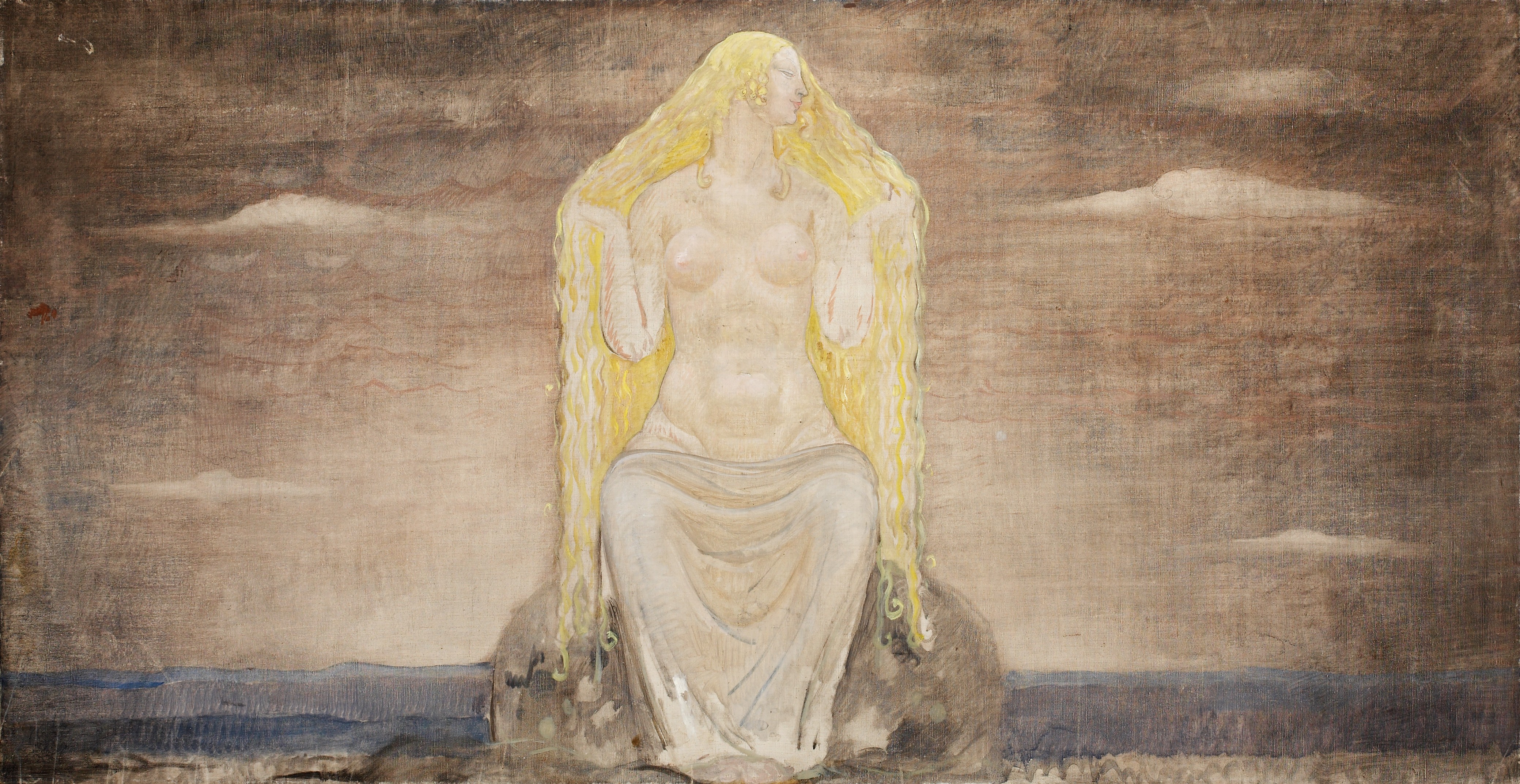|
æsir
Æsir (Old Norse; singular: ) or ēse (Old English; singular: ) are gods in Germanic paganism. In Old Nordic religion and mythology, the precise meaning of the term "" is debated, as it can refer either to the gods in general or specifically to one of the main families of gods, in contrast to the Vanir, with whom the Æsir waged war, ultimately leading to a joining of the families. The term can further be applied to local gods that were believed to live in specific features in the landscape - such as fells. The Old English medical text Wið færstice refers to the Ēse, along with elves, as harmful beings that could cause a stabbing pain, although exactly how they were conceived of by the author of the text is unclear. and its cognate forms feature in many Germanic names, such as Oswald and , and in some place-names in Norway and Sweden. The Æsir further likely give their name to the A-rune, attested in the Elder Futhark, Anglo-Saxon Futhorc and Younger Futhark. T ... [...More Info...] [...Related Items...] OR: [Wikipedia] [Google] [Baidu] [Amazon] |
Æsir–Vanir War
In Norse mythology, the Æsir–Vanir War was a conflict between two groups of deities that ultimately resulted in the unification of the Æsir and the Vanir into a single Pantheon (religion), pantheon. The war is an important event in Norse mythology, and the implications for the potential historicity surrounding accounts of the war are a matter of scholarly debate and discourse. Fragmented information about the war appears in surviving sources, including ''Völuspá'', a poem collected in the ''Poetic Edda'' in the 13th century from earlier traditional sources; in the book ''Skáldskaparmál'' in the ''Prose Edda'', written or compiled in the 13th century by Snorri Sturluson; and in euhemerized form in the ''Ynglinga saga'' from ''Heimskringla'', also often considered to have been written by Snorri Sturluson in the 13th century. Attestations ''Poetic Edda'' In two stanzas of ''Völuspá'', the war is recounted by a völva (who refers to herself here in the third person) while ... [...More Info...] [...Related Items...] OR: [Wikipedia] [Google] [Baidu] [Amazon] |
Nordic Mythology
Norse, Nordic, or Scandinavian mythology, is the body of myths belonging to the North Germanic peoples, stemming from Old Norse religion and continuing after the Christianization of Scandinavia as the Nordic folklore of the modern period. The northernmost extension of Germanic mythology and stemming from Proto-Germanic folklore, Norse mythology consists of tales of various deities, beings, and heroes derived from numerous sources from both before and after the pagan period, including medieval manuscripts, archaeological representations, and folk tradition. The source texts mention numerous gods such as the thunder-god Thor, the raven-flanked god Odin, the goddess Freyja, and numerous other deities. Most of the surviving mythology centers on the plights of the gods and their interaction with several other beings, such as humanity and the jötnar, beings who may be friends, lovers, foes, or family members of the gods. The cosmos in Norse mythology consists of Nine Worlds ... [...More Info...] [...Related Items...] OR: [Wikipedia] [Google] [Baidu] [Amazon] |
Vanir
In Norse mythology, the Vanir (; Old Norse:, singular Vanr) are a group of gods associated with fertility, wisdom, and the ability to see the future. The Vanir are one of two groups of gods (the other being the Æsir) and are the namesake of the location Vanaheimr (Old Norse "Home of the Vanir"). After the Æsir–Vanir War, the Vanir became a subgroup of the Æsir. Subsequently, at least some members of the Vanir are at times also referred to as being Æsir. The Vanir are attested in the ''Poetic Edda'', compiled in the 13th century from earlier traditional sources; the ''Prose Edda'' and ''Heimskringla'', both written in the 13th century by Snorri Sturluson; and in the poetry of skalds. The Vanir are only attested in these Old Norse sources. All sources describe the god NjörĂ°r, and his children Freyr and Freyja as members of the Vanir. A euhemerism, euhemerized prose account in ''Heimskringla'' adds that Sister-wife of NjörĂ°r, NjörĂ°r's sister—whose name is not providedâ ... [...More Info...] [...Related Items...] OR: [Wikipedia] [Google] [Baidu] [Amazon] |
Baldr Dead By Eckersberg
Baldr (Old Norse also Balder, Baldur) is a god in Germanic mythology. In Norse mythology, he is a son of the god Odin and the goddess Frigg, and has numerous brothers, such as Thor and Váli. In wider Germanic mythology, the god was known in Old English as , and in Old High German as , all ultimately stemming from the Proto-Germanic theonym ('hero' or 'prince'). During the 12th century, Danish accounts by Saxo Grammaticus and other Danish Latin chroniclers recorded a euhemerized account of his story. Compiled in Iceland during the 13th century, but based on older Old Norse poetry, the ''Poetic Edda'' and the ''Prose Edda'' contain numerous references to the death of Baldr as both a great tragedy to the Æsir and a harbinger of Ragnarök. According to '' Gylfaginning'', a book of Snorri Sturluson's Prose Edda, Baldr's wife is Nanna and their son is Forseti. Baldr had the greatest ship ever built, '' Hringhorni'', and there is no place more beautiful than his hall, Breid ... [...More Info...] [...Related Items...] OR: [Wikipedia] [Google] [Baidu] [Amazon] |


